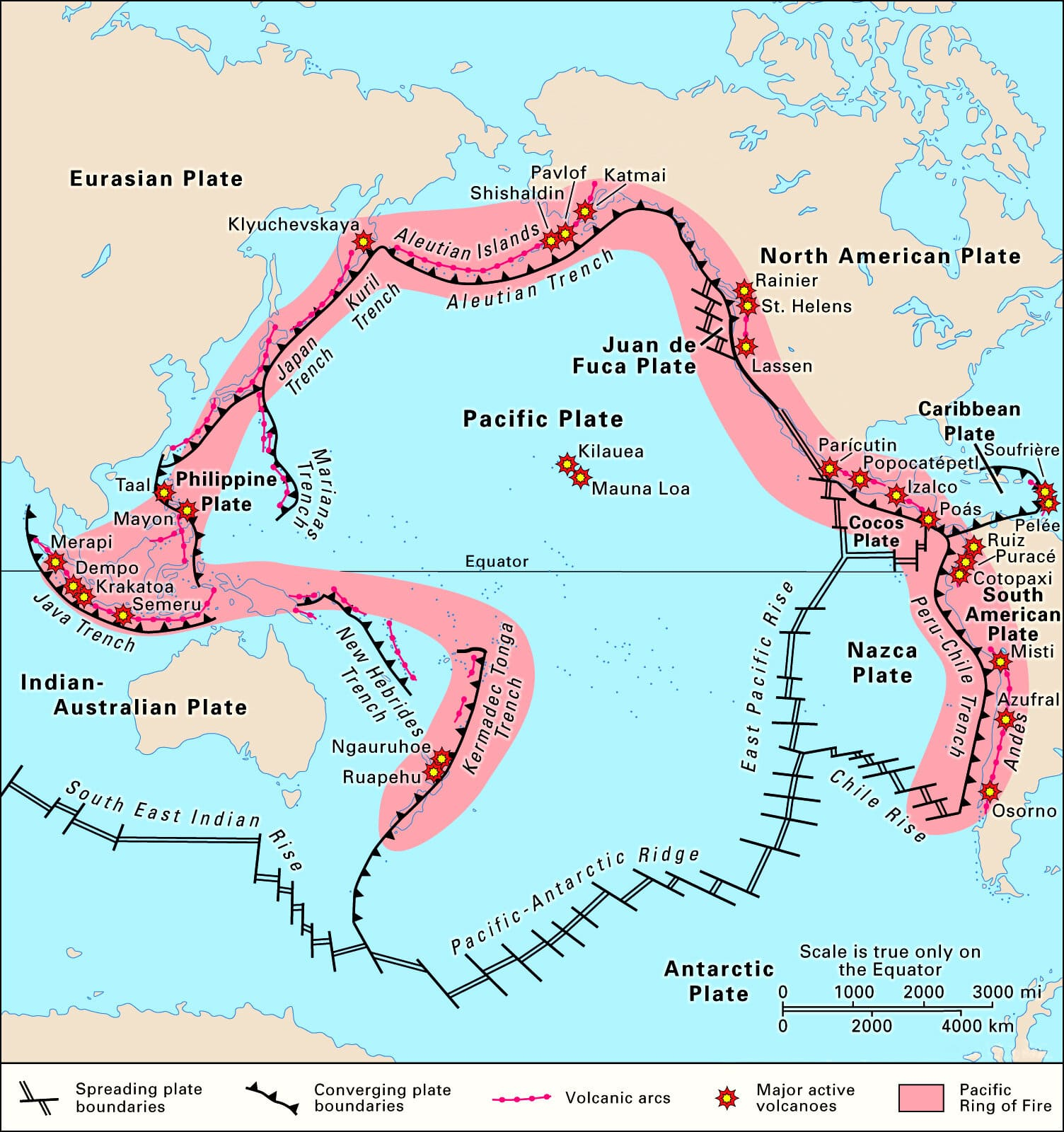-
19 Jul 2024
GS Paper 1
Geography
Day 11: The Circum-Pacific Zone is characterized by its significant tectonic, volcanic, and seismic activity.Comment.(150 words)
Approach
- Briefly introduce the Circum-Pacific Zone.
- Discuss the Key characteristics of the Circum Pacific Zone.
- Conclude Suitably
Introduction
The Circum-Pacific Zone, often referred to as the "Ring of Fire," is a path along the Pacific Ocean characterized by active volcanoes and frequent earthquakes. This zone runs up along the western coast of South and North America, crosses over the Aleutian Islands in Alaska, runs down the eastern coast of Asia past New Zealand and into the northern coast of Antarctica.
Body
Key Characteristics of Circum Pacific Zone :
- Tectonic Activity:
- The Circum-Pacific Zone is a region where multiple tectonic plates meet. The Ring of Fire stretches to approximately 40,000 kilometers (24,900 miles) tracing boundaries between several tectonic plates including the Pacific, Juan de Fuca, Cocos, Indian-Australian, Nazca, North American, and Philippine Plates.
- The Pacific Plate, the largest tectonic plate, interacts with several other plates, including the North American, Eurasian, Philippine, Indo-Australian, and Antarctic plates. These interactions primarily include:
- Subduction Zones: Areas where one tectonic plate slides beneath another, leading to intense geological activity. Examples include the Japan Trench, the Peru-Chile Trench, and the Mariana Trench.
- Transform Faults: Plates slide past one another, causing earthquakes. The San Andreas Fault in California is a prime example.
- Volcanic Activity:
- The Ring of Fire is home to more than 450 active and dormant volcanoes (75% of Earth’s total volcanoes) forming a semicircle or horse shoe around the rim of the Pacific Ocean.
- Most of the active volcanoes on the Ring of Fire are found on its western edge, from Russia to New Zealand.
- Major volcanic events have occurred within the Ring of Fire since 1800 including the eruptions of Mount Tambora, Indonesia (1815), Mount Ruiz, Columbia (1985), and Mount Pinatubo, Philippines (1991).
- Seismic Activity:
- 90% of earthquakes occur along the , including the planet’s most violent and dramatic seismic events.
- The Ring of Fire has been the setting for the most devastating earthquakes in recorded history, including the Chile earthquake of 1960 and 2010, the Alaska earthquake of 1964, and the Japan earthquake of 2011 as well as the earthquake that produced the devastating Indian Ocean tsunami of 2004.
Conclusion
The intense tectonic, volcanic, and seismic activity in the Circum-Pacific Zone has significant and multifaceted impacts on the environment, economy, human health, and social structures. Understanding the mechanisms behind this activity is crucial for disaster preparedness and mitigating the impacts on human populations and economies.





